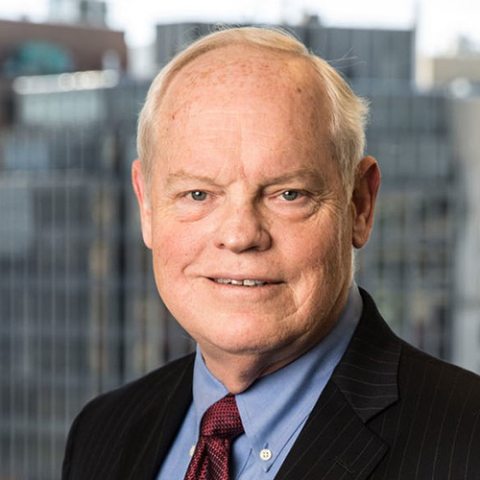p(firstLetter). When I was growing up, my extended Jewish family held an annual party. On one occasion, a visiting college student majoring in philosophy lectured us on his theory of justice. He explained why all trace of Christmas should be banned in public spaces, and not just nativity scenes, since the very notion of Christmas was an affront to both Jews and secularists. My family stood dumbfounded and aghast. My mother dismissed the young man as a fool, shouting at him, “Are you crazy? Let the goyim have their holiday!”
This young man is the only Jew I ever met who wanted to ban Christmas. Most other Jews I know share my mother’s attitude, more or less, not out of any particular philosophy, but because they see no reason to pick a fight with their far more numerous Christian neighbors. To their minds, Jews have rights and freedoms, life is good, and so why unnecessarily antagonize all those nice Christians by sanitizing the public square of Christmas trees, reindeer figures, and peppermint sticks?
This squabble between a young idealist and my more prudent mother is a small version of the larger, age-old question over how far to push social change. That question is especially relevant now in the wake of the Supreme Court decision in Masterpiece Cakeshop v. Colorado Civil Rights Commission, which involved a devout Christian baker who refused to make a custom cake for a same-sex couple’s wedding. The Supreme Court narrowly ruled for the baker because the commission showed signs of “religious hostility,” but it left open the question of whether a religious person can be compelled to make a custom wedding cake with a personalized pro-gay marriage message. In theory, according to the Platonic ideal of leftist social justice, a religious person should be compelled, and some in the LGBT “community” demand this. Yet this represents an unwise change in tactics for a movement that until now has practiced an almost pitch-perfect strategy for furthering gay rights.
The debate between idealism and prudence can be traced back to Edmund Burke’s criticism of the French Revolution and the philosopher Rousseau, who died shortly before the Revolution but whose writings inspired it. Even before the mass executions and the Reign of Terror began, Burke warned that the Revolution would take a dangerous turn, organized as it was by intellectual speculators with abstract theories of justice.1 Rousseau, in particular, exemplified the new type: a person with no sense of the real world and therefore no comprehension of limits; a self-righteous thinker of big ideas; a social engineer eager to experiment with people in the same way a scientist experiments with mice in an air pump. Burke feared that fanatical idealists in the tradition of Rousseau would eventually demand their social theories be implemented without exception, and that in their single-minded pursuit of purity they would start killing people.
The only antidote to such a monomaniacal tendency in politics was prudence, Burke argued. Political leaders must know theory, he said, but they must also know the local conditions before applying that theory, to get a sense of how far to push. This allows for a more judicious application of theory that lets everyone, both reformer and traditionalist, live together in order and peace.
Burke was not against all revolutions. He supported the American Revolution for the same reason he opposed the French Revolution. In the American case, it was the British who were guilty of fanatically applying theory—not the Rights of Man but the Rights of Sovereignty. In theory, the king had the right to tax the colonists, but given the latter’s obsession with freedom it was unwise to do so, Burke counseled. Again, Burke’s warning proved prescient.
Rousseau-like speculators can be found today on both the political Left and Right. Whenever I ask social justice warriors for a solution to an obscure country’s problems, they invariably reply, “social justice.” An example would be their insistence on bringing the #MeToo movement to every country around the globe. When I pose the same question to extreme libertarians, they invariably reply, “free markets.” Neither group knows anything about the country at issue, nor do they think they need to know anything. All they need to know, they think, is their pet theory, which they are eager to apply anywhere and always and to the limit, independent of local conditions. If the planet Mars were ever colonized, leftist ideologues would demand social justice for the Martians, while conservative ideologues would urge free markets on them.
Besides violence, the problem with Rousseau-like reform tactics is that they can backfire. An example of this is the “pro-choice” abortion movement. Prior to Roe v. Wade in 1973, several states, including in the South, had started to liberalize their abortion laws. Although religious Catholics had always opposed abortion, many religious Protestants lacked strong feelings on the issue. Indeed, liberals who saw fetal rights as an extension of individual rights, rather than just conservatives, sponsored many of the early pro-life rallies.2 In the spirit of Burke’s wise counsel, American society was moving slowly toward easier access to abortion, with some states moving faster than others, as local conditions dictated, and the nation as a whole growing more tolerant of the practice.
Suddenly, with Roe v. Wade, a universal right to abortion was speculated into existence and applied to the whole country. A theory imagined out of thin air, or at least from a novel interpretation of the Constitution, replaced the slow but steady process of acclimatization that goes hand in hand with accepted social change. For many conservatives the move seemed tyrannical; more important, it infuriated millions of religious Protestants, who adopted the new “family values” motto. The country has been fighting over abortion ever since.
If the Burkean model of social change had been allowed to take its course, it is possible that the ire of religious Protestants would have never been stoked, feminists would have talked down the few liberals holding pro-life rallies, all 50 states would have evolved toward some kind of abortion access, and, most important, there would be little fighting today over the issue, as a moderate pro-choice position would have achieved national dominance organically.
p(firstLetter). Contrast the abortion mess with the outcome of the gay rights movement. Before he passed away, I had a conversation with Dudley Clendinen, author of Out for Good, an excellent history of the gay rights movement. Although the movement was not monolithic, activists who pushed for marriage equality generally recognized that achieving this goal would take time, and that there would be necessary intervening steps—for example, in the areas of fair housing laws, employment discrimination, and the right to serve in the military. On reflection, these steps can best be described as acclimatizing society to full and equal membership of gays and lesbians.
The average American may have been homophobic in the 1960s and 1970s, as organized psychiatry during that period still categorized homosexuality as a disease, but over the next several decades, the average American saw that gays and lesbians worked hard and paid their taxes like everyone else, making job discrimination seem unfair; and then they saw that they mowed their lawns and kept their houses orderly, making housing discrimination seem unfair; and then they saw that they kept their kids clean and well-mannered, making non-religious adoption bans seem unfair; and then they saw that they served their country honorably, making the military ban seem unfair (as Senator Barry Goldwater once said, “I don’t care if a soldier is straight, as long as he can shoot straight”); marriage equality became the natural next step. Marriage equality was not a sudden, bracing implementation of theory out of the blue, but rather a new value that had evolved naturally in the same way a tree grows a new bud.
When the Supreme Court legalized gay marriage in 2015, some (but not all) social conservatives reacted angrily, but by and large the country accepted the decision because of the vital cultural spadework done beforehand. It has since moved on. Unlike abortion, which is still actively contested, and where even the non-ideological President Trump feels compelled to defend the pro-life position through regulation, efforts to reverse marriage equality have less energy and lack Trump’s support, if only because such support would be a political loser.
True, the path to gay rights and same-sex marriage was full of odd twists and turns, which happens when theory is not applied suddenly and universally in one bold stroke. The great mass of Americans groped their way to a new understanding. For example, in 1982, it was Wisconsin and not the coastal states that first outlawed discrimination based on sexual orientation. In 1993, President Clinton tried to thread the cultural needle with his makeshift “Don’t Ask, Don’t Tell” military policy, which let “closeted” gays and lesbians stay in the military. In supposedly progressive California a gay marriage ban passed in 2000 with more than 60 percent support, and then again in 2008, albeit with only 50 percent support; by 2015, when the Supreme Court legalized gay marriage, opposition to gay marriage in California polled less than 40 percent.3 People evolve, people change, as Burke observed, although the pace is sometimes too slow for impatient theoreticians.
p(firstLetter). After marriage equality passed nationally, some gay rights organizations shrewdly disbanded, having achieved their goal.4 There would be no “permanent revolution,” as some theoreticians call for. For many gays and lesbians it was time to go from being a new and exciting bud on society’s tree to blending in with all the other boring branches that give the tree its vital structure. In other words, it was time to assimilate, as Jews and other minorities had prudently done in their day after achieving their goals.
But the gay wedding cake issue in Masterpiece has thrown a monkey wrench into the plan. It signifies the ascent of theory over prudence.
Richard Thompson Ford, in a recent TAI essay titled, “Anti-Discrimination Eats Itself,” captures one aspect of that change. He notes that the theory behind anti-discrimination law has greatly expanded over the years, on behalf of both religious people and oppressed minorities, such that what was once a workable idea—for example, don’t discriminate against someone because of their race, religion, or sexual orientation—has expanded to include the illegality of discriminating against anyone for any kind of behavior. This is what led to the impasse in Masterpiece, notes Ford, as we now face an unresolvable conflict of absolutes: the freedom to behave in accordance with one’s religious belief and the right to have one’s culture accommodated in all situations. He suggests cutting back on the applicability of anti-discrimination law to religious people, and muses on the spinelessness of a liberal culture that hesitates to “outlaw discrimination against the discriminators.” This moves Ford closer to the LGBT position in the wedding cake debate. Yet even he admits that the culture itself must work these issues out, and that theories of rights get us nowhere.
This is precisely Burke’s point. Theory is an insufficient guide. Societies differ, their cultures differ, because the conditions in each society differ, growing out as they do from different histories. This is why universal theory can only take reformers so far. The question then becomes what to do. In the case of the French Revolution, rather than seek a workable solution unique to France, the idealists dealt with the inevitable pushback by imposing their theory of justice on everyone, violently and bloodily, inspired by Rousseau’s dictum that sometimes people must be “forced to be free.”5 In the name of freedom the idealists abolished freedom. The alternative approach to social reform, Burke observed, is prudence.
When writing this essay, I asked several legal scholars about analogous precedents in American law. I asked what happened in the past when a Jew went to a devout Christian baker and asked that baker to make a special holiday cake topped with a religious message slighting Christianity—for example, “We await the first coming of the Messiah.” The scholars told me they were not familiar with such a case. Some of them mused over how the case would be judged in light of Masterpiece. One of them said, “Obviously, such a case would never happen.” I think the last scholar had it right, yet it is the non-event that makes this imaginary case so relevant. The case has never happened because in the history of America no Jew has ever been stupid enough to ask a devout Christian baker to make such a cake, just as no Jew (except the one young man I met at my family’s holiday party) has been stupid enough to call for a ban on Christmas. There is no theory accounting for such a non-event. It is simply prudence on the part of Jews—and Jews have done well by such prudence.
p(firstLetter). Masterpiece did not decide the conflict between two conflicting theories. The justices seem to be as flummoxed as everyone else over how to resolve a contest between absolutes when prudence has been thrown by the wayside.6 The problem is that Masterpiece should never have occurred in the first place. The logical trajectory for gays and lesbians after the marriage equality triumph was to go forward in life happily but prudently, as all people in the United States do, given the diversity of cultures and the need for all of us to get along. Every baker in America must sell a generic wedding cake to a gay couple; most bakers are happy to sell them a special wedding cake. Why purposely poke the eye of the one baker in town who isn’t? Such behavior may be theoretically correct, but it is also crazy, as my mother would say.
To some degree, the LGBT activists who pushed Masterpiece are not to blame. The juggernaut of cultural change that has catapulted the theory of individual self-expression to the status of inviolate principle has caught them up, too. Already in the 1970s, writers such as Christopher Lasch in his Culture of Narcissism were commenting on the phenomenon. The theory of individual self-expression demands absolute autonomy, perfect self-esteem, unassailable safe space, and unbridled freedom of behavior in private life. It declares that we need not suffer even the slightest emotional inconvenience at the hands of others. But the theorists leading the movement forgot one important thing: We have to live with others. That leaves us with a stark choice. Either we destroy those who stand in our way, in the spirit of Rousseau, or we defuse the tension through prudence and try to get along with them, in the spirit of Burke.













